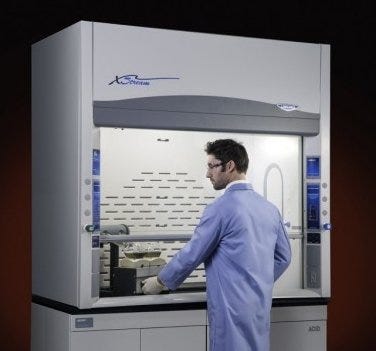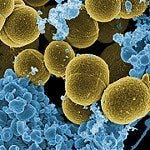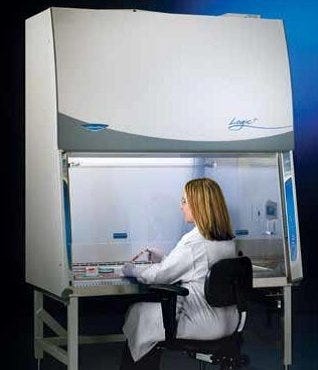The United States Center for Disease Control (CDC) has developed guidelines to classify laboratory applications conducted with potentially hazardous biological microorganisms. These levels range from Biosafety Level 1 (the least hazardous) to Biosafety Level 4 (the most hazardous).
In addition to specifying guidelines for the type of work that is classified under each Biosafety Level (BSL), the CDC also has guidelines for the types of precautions and protections needed to mitigate injury resulting from exposure to pathogens. These Biosafety Level protocols have been used by manufacturing companies as references for engineering controls such as biosafety cabinets and glove box enclosures. Creating a secure working environment is a critical goal of the CDC and individual employers.
Continue reading to learn the specific differences between the CDC’s first two Biosafety Levels.
Biosafety Level 1
- Overview: Biosafety Level 1 is specified as work with well-characterized agents that are known notto cause disease in healthy, non-immunocompromised adults. Special containment practices and devices are generally not required, but institutional laboratory practices must be implemented to reduce risk to laboratory personnel.

Chemistry Fume Hood, by Labconco
- Examples of Microbial Organisms that Require Biosafety Level 1: nonpathogenic Escherichia coli, other non-infectious bacteria such as Bacillus subtilis.
- Laboratory Types: Standard teaching and research laboratories.
- Laboratory Practices Required: Standard Good Laboratory Practices, such as use of personal protective equipment (PPE), hand washing, and decontamination of work surfaces.
- Safety Equipment Required: Biological safety cabinets (BSCs) are not required and most procedures are performed on an open bench. Special engineering controls, such as fume hoods and cabinets may be used to minimize exposure to chemical or sample spills.
Biosafety Level 2
-

Staphylococcus aureus bacteria, viewed under electron microscope.
Overview: Biosafety Level 2 is specified as work that poses moderate hazards to personnel and the environment. Research or diagnostic activities that are administered with pathogenic bacteria, such as Staphylococcus aureus or Salmonella, fall into this category. This Biosafety Level builds upon Biosafety Level 1; all of the precautions and practices spelled-out in Biosafety Level 1 must be followed in addition to those found in Biosafety Level 2. Special containment practices and devices are generally required to mitigate risk to laboratory personnel.
- Examples of Microbial Organisms that Require Biosafety Level 2: Staphylococcus aureus, Salmonella species, Herpes Simplex Virus, Adenovirus, and Human Immunodeficiency Virus (HIV).
- Laboratory Types: Primary healthcare diagnostic and research laboratories.
- Laboratory Practices Required: PPE, restricted access to laboratory areas, use of primary engineering controls (PECs) such as biosafety cabinets and glove boxes to reduce the risk of aerosolized exposure to pathogens.
- Safety Equipment Required: BSCs are required as a PEC, and research or diagnostic activities must be performed within these devices. In addition, special engineering controls, such as fume hoods and cabinets may be used to minimize exposure to non-pathogenic substances.
Conclusion
BSL operational recommendations are developed to both protect lab personnel and give meaning to their important research. Without these precautions, work would be dangerous, inefficient and more time-consuming. Specialized equipment is a necessary investment, and Terra can help make sure you get everything you need for a successful lab.
Click for more information about our BSCs; visit our Fume Hoods web page; and see information about biohazard containment glove boxes.
Photo by NIAID 



